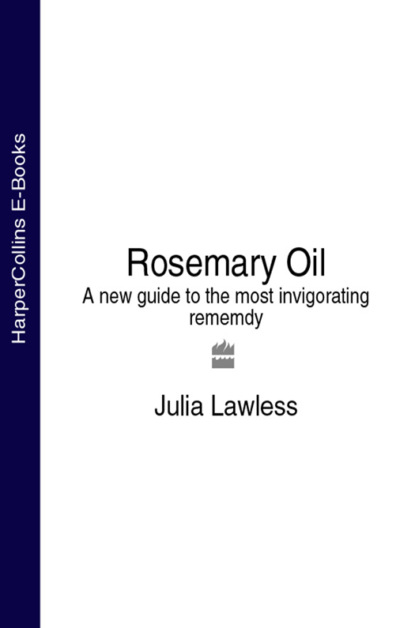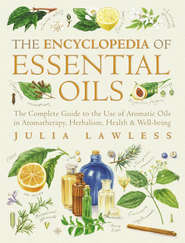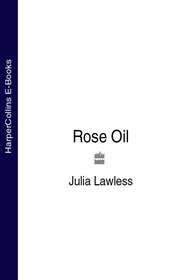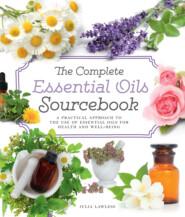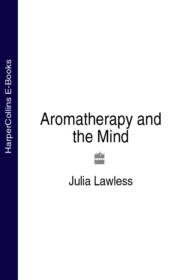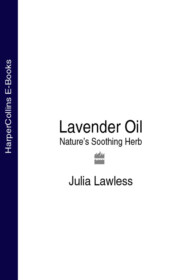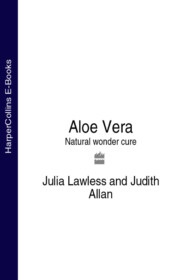По всем вопросам обращайтесь на: info@litportal.ru
(©) 2003-2024.
✖
Rosemary Oil: A new guide to the most invigorating rememdy
Настройки чтения
Размер шрифта
Высота строк
Поля
Speaking of the powers of rosemary, it overtoppeth all the flowers in the garden, boasting man’s rule. It helpeth the brain, strengtheneth the memorie, and is very medicinable for the head. Another property of the rosemary is, it affects the heart. Let this rosemarinus, this flower of men, ensigne of your wisdom, love and loyaltie, be carried not only in your hands, but in your hearts and heads.
Rosemary is one of the native ‘cure all’ remedies which can be found among the traditional folk customs of many countries, especially those of the Mediterranean region. It has an ancient medical history, although the earliest record of its use specifically for therapeutic purposes can be traced to Greek and Roman times. The ancient Greeks burned sprigs of rosemary as an incense on their shrines – so it became known as the ‘Incense Bush’. The great classical writers Dioscorides and Theophrastus recommended it specifically for stomach and liver problems. Galen too prescribed it for liver disorders, particularly jaundice, while Hippocrates, the ‘Father of Medicine’, said that the herb (R. officinalis var. officinalis) was best cooked with vegetables to overcome liver and spleen complaints.
The Romans used infusions of rosemary for weakness of the heart, poor circulation, anaemia and nervous exhaustion. It was also employed to clean wounds and recommended for coughs and chest complaints. It was the Romans who most probably introduced rosemary to Britain, as they did in other parts of their Empire, although this was not recorded at the time. It is, however, mentioned in the Anglo-Saxon Leech Book of Bald (circa AD 1000) as a protection against evil spirits and as a remedy for toothache. In the thirteenth-century Myddfai manuscripts it is recommended as a charm against nightmares and ‘all mental anxiety’ when placed under the pillow. This tends to suggest that the herb was already in use before the fourteenth century, when the Countess of Hainault sent rosemary plants to England for her daughter Philippa, Queen of Edward III (1327–77), together with a manuscript extolling its virtues: ‘Rosemary … it mighteth the boones and causeth goode and gladeth and lighteth alle men that use it.’
Throughout Europe during this period, rosemary twigs were used extensively as a fumigant in sick rooms, hospitals and as a preventative against the plague. An old French name for the herb was Incensier, because it was sometimes burned as incense in church. In a thirteenth-century French treatise, Arnauld de Villeneuve also describes how the essential oil could be distilled and used as a remedy. Indeed, over the next few centuries rosemary was one of the most valuable medicines at the disposal of the apothecary, and was prepared in a variety of ways. The leaves and flowers were used fresh or dried, often mixed with wine (in the form of a tincture) or prepared as an infusion by boiling them in water. Aromatic oils, ointments and liniments were commonly applied for external treatment. Rosemary was also the vital ingredient in the famous ‘Queen of Hungary Water’, a lotion which is said to have completely rejuvenated and revitalized the paralysed limbs of that ageing sovereign. A formula dated 1235, which is thought to be in the handwriting of Elizabeth, Queen of Hungary, is still preserved in Vienna.
It was prepared by putting one and a half pounds of fresh rosemary tops, in full flower [some versions include myrtle and lavender] into one gallon of spirits of wine … this was allowed to stand for four days and then distilled. Hungary water was also considered very efficacious against gout in the hands and feet, being rubbed into them vigorously.
As a rejuvenating elixir for cosmetic purposes, rosemary was also renowned as a fine tonic for the hair and scalp. It was used to eliminate dandruff, stimulate hair growth, prevent baldness and generally enhance the colour of dark hair. The doctors of Myddfai, in addition, counselled the use of rosemary for retaining a youthful complexion:
A fine thing it is to boil in water the leaves and flowers and to use the mixture as a face wash. Do not wipe the face afterwards, but let it dry naturally. The truth is that by regularly washing their faces in this way the wise will keep their youth until the day they die.
From the fifteenth to the seventeenth century, the numerous medicinal and cosmetic applications of rosemary were duly recorded at length in the new European herbels. Banckes’ Herbal of 1525 gave an authoritative list of complaints which might be treated with the herb: ‘Take the flowers thereof and boyle them in fare water and drinke that water, for it is much worthe against all manner of evils in the body …’
Half a century later, Nicholas Culpeper (1616–54) recommended a decoction of the herb in wine for all ‘cold diseases of the head and brain’, such as giddiness, lethargy and weak memory; an infusion of the herb in oil for rheumatism and for refining the complexion; and that the dried leaves should be smoked in the form of tobacco for consumption or chronic coughs. Regarding the essential oil, he mentions the following warning:
The chymical oil drawn from the leaves and flowers … is a sovereign help for all the diseases aforesaid, to touch the temples and nostrils with two or three drops for all the diseases of the head and brain spoken of before; as also to take one drop, two or three, as the case requires for the inward diseases; yet it must be done with discretion, for it is very quick and piercing, and therefore but a little must be taken at a time.
Because of its sharp, penetrating odour, the Elizabethans used rosemary oil in place of smelling salts to revive a faint spirit. The sixteenth and early seventeenth century also saw a revival in the use of flower waters, which the Elizabethans used to scent their clothes and floors, sprinkling fragrant liquids from their ‘casting bottles’. Rosemary was also a central feature in the formal Elizabethan herb gardens, where it was often used as hedging or clipped into the shape of a bench, a bird, a cart or some other object. In England, as in other European countries, most large houses had their own ‘still room’ where herbs could be dried and where aromatic oils and fragrant waters could be prepared. Apart from her obsession with roses, France’s Empress Josephine is said to have loved the scent of rosemary. She requested Napoleon to wash in rosemary water before he entered her bedchamber, and he used it to sweeten his breath. It is recorded that Napoleon used up 162 bottles of rosemary water in the first three months of their marriage!
The Colonial Americans were also aware of the cosmetic benefits of rosemary, which they introduced to the ‘New World’. They used a rosemary rinse not only to improve the shine and colour of their hair, but also to make it curl. During the eighteenth century in the United States, as in Europe, rosemary was also valued as a medicine and commonly prescribed as a stimulant, emmenagogue and anti-spasmodic, while its oil was principally employed in ointments, liniments and embrocations.
By the beginning of the nineteenth century, however, both in the US and Europe, herbal medicine was already in decline as newly discovered chemical drugs took their place. Ancient folk remedies such as rosemary lost credibility in the eyes of the professionals and public alike, while the scientific approach, with its emphasis on specialization, steadily gained ground. It was only in the first few decades of the twentieth century that the potential of plant medicines began to be re-assessed seriously in the light of new scientific evidence using modern research techniques.
CHAPTER THREE (#ulink_4498717b-2e37-5789-8b85-631e8058a20e)
Rosemary Oil: Chemical Analysis and Clinical Research (#ulink_4498717b-2e37-5789-8b85-631e8058a20e)
Forgotten and ignored for many years, aromatic essences are coming back into their own, for many researchers and for a wide section of public opinion, as the stars of medicine. Faced with a mounting toll of complications known to have been caused by aggressively synthesized chemical medications, many patients are now unwilling to be treated except by natural therapies, foremost among which plants and essences have their rightful place.
The resurgence of interest in aromatherapy, medical herbalism and other natural therapies over the last few decades bears witness to the opening words of Dr Valnet’s pioneering book The Practice of Aromatherapy, first published in France in 1964. In it, he advocates the re–evaluation of plant medicines using modern research techniques and cites many clinical tests which confirm ‘the validity of traditional ideas based on practical experience’.
In the past, when the chemical composition of essential oils was still a mystery, aromatic oils were used successfully to combat all types of infectious disease. Such knowledge was based on the vast accumulation of empirical evidence gathered over centuries of experimentation. In Europe during the Great Plague of 1665, for example, rosemary was burned in public places to help contain the epidemic, and was carried in special pouches or compartments inside walking sticks as protection while passing through infected areas.
Recent research has shown that rosemary is in fact one of the most potent antiseptic and prophylactic agents available. As early as the 1920s, René Gattefossé, the French chemist who first coined the term ‘aromatherapie’, had noted the powerful bactericidal properties of rosemary in his own clinical research based on a detailed chemical analysis of the oil:
The essences of rosemary, sage, pine and fir contain borneol and its esters. This is what gives them their strong antiseptic qualities and accounts for their medicinal applications. Essence of rosemary is considered a beneficial stomachic against atopic dyspepsia. The leaf infusion is stimulating and has yielded excellent results for some feverish conditions causing temporary but worrying prostration.
He continues:
Cazin obtained marvellous results for pernicious bouts of malaria. Brissemoret, in his ‘Essais sur les preparations galeniques’, lists it as a stimulant and tonic because of the presence of borneol, along with camphor, cineol, pinene and camphene. It is a vermifuge and an emmenagogue.
Gattefossé had not been the first to draw conclusions about the therapeutic potential of an essential oil by examining its chemical composition. A wealth of research had already been carried out during the previous 50 years by Calvello (1902), Marx (1903), Kobert (1906) and Clavel (1918), to name but a few.
However, as a chemist with a specialist interest in aromatics Gattefossé did make a substantial contribution to this field, which later proved an inspiration to Dr Valnet.
Through his work as a doctor and surgeon during the Second World War, Valnet had become especially interested in the antiseptic properties of essential oils and their ability to inhibit the spread of infection. He introduced the use of natural aromatics into his clinical practice with very successful results. In 1958 Dr Valnet wrote: ‘…we learned that vapours derived from aromatic plants possess antiseptic properties which inhibit the development of certain staphylococci and coliform bacilli. These plants include (in descending order of potency) thyme, rosemary, eucalyptus, peppermint, orange blossom… etc.’
To study the suppression of germs by aromatic oils with greater precision, Valnet and his colleagues formulated a laboratory technique called the ‘aromatogram’. This method, which involved testing specific oils on cultured bacteria in vitro, was used not only to ascertain the minimum effective dosage of various oils but also to find which one was best suited to treating a particular infection. One of the intriguing aspects of this programme was that patients responded to different oils even if suffering from the same infection! This is because, unlike antibiotics (which kill germs and healthy bacteria alike), essential oils support the body’s own defence system by creating a healthy environment in which the pathogens are unable to survive – according to the needs of each individual case.
In 1978, Valnet and his colleagues employed the ‘aromatogram’ to carry out 268 test cases, using a variety of oils including rosemary. Several bacteria and fungi were tested, including Staphylococcus aureus, E. coli, Proteus mirabilis, Strep. faecalis and Candida albicans. Although rosemary proved to be 1.48 times more effective than antibiotics in vitro against the above organisms, it was not as successful as some oils, such as origanum, cinnamon, thyme or savory at combating both bacterial and fungicidal germs. Subsequent research carried out during the 1970s, eighties and early nineties has in fact confirmed that, although rosemary is effective against a wide range of bacteria, its fungicidal action is more variable:
1974: Opdyke – Rosemary was shown to have good antimicrobial properties in a series of tests against bacteria and fungi.6 (#litres_trial_promo)
1976: Bardeau – Several vaporized oils were tested for their capacity to destroy a range of bacteria including Proteus, Staph, aureus and Strep. pyogenes. Rosemary was found to be one of the most effective essences (together with lavender, thyme, pine, marjoram and clove), and thus was found suitable for the treatment of infections such as the common cold and bronchitis.7 (#litres_trial_promo)
1987: Deans and Richie – rosemary was tested against 25 types of bacteria, and found effective against 21 varieties.8 (#litres_trial_promo)
1984: Benjilali et al. – rosemary and eucalyptus were demonstrated to be less effective than thyme and three artemisia oils at inhibiting 39 fungi.9 (#litres_trial_promo)
1993: Biondii et al. – 22 oils, including rosemary, were tested against seven bacteria. Rosemary was not among the top oils but it was noted that ‘other studies gave conflicting results, and this was due to the compositional differences of the oils dependent on their source.’10 (#litres_trial_promo)
1994: Pandit and Shelef – Eighteen spices were screened for anti-listerial properties. Only rosemary and cloves were found to be listericidal.11 (#litres_trial_promo)
Вы ознакомились с фрагментом книги.
Приобретайте полный текст книги у нашего партнера:
Приобретайте полный текст книги у нашего партнера:





